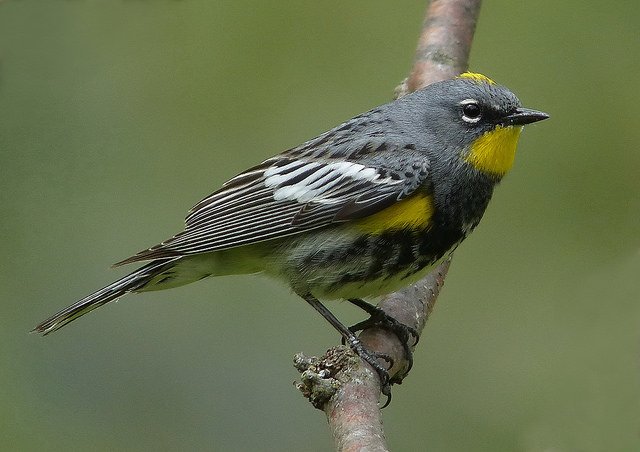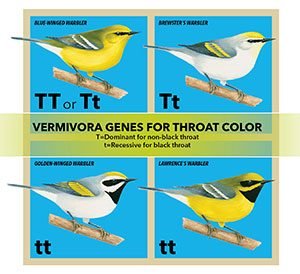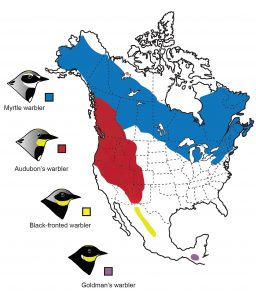
(With regards to The Smiths for the title inspiration)
North American listers, if you haven’t already been following the latest drama in bird taxonomy, courtesy of two new studies, buckle up … because it’s probably going to be a bumpy ride.
 The first paper, in the new issue of Current Biology, compares the genetics of Blue-winged and Golden-winged Warblers. The results, which found a 99.97% correlation between the two genomes, seem to confirm an earlier theory that the variations in plumage between the birds owe to dominant and recessive traits. (A press release about the study likened the contrast to “the differences between humans with and without freckles.”) There’s no indication yet that the American Ornithological Union is considering lumping Blue-wings and Golden-wings into one species, but according to the researchers, a conservation case can be made for doing so, as both birds favor similar habitats. (Genetic differences in throat color illustration by Liz Clayton Fuller/Bartels Science)
The first paper, in the new issue of Current Biology, compares the genetics of Blue-winged and Golden-winged Warblers. The results, which found a 99.97% correlation between the two genomes, seem to confirm an earlier theory that the variations in plumage between the birds owe to dominant and recessive traits. (A press release about the study likened the contrast to “the differences between humans with and without freckles.”) There’s no indication yet that the American Ornithological Union is considering lumping Blue-wings and Golden-wings into one species, but according to the researchers, a conservation case can be made for doing so, as both birds favor similar habitats. (Genetic differences in throat color illustration by Liz Clayton Fuller/Bartels Science)

On the opposite end of the spectrum are findings, from researchers at the University of British Columbia and Cornell, considering Yellow-rumped Warblers. Genetic-based research published in The Auk indicates that the four variants of “butterbutts” include at least three full species. Besides the familiar Myrtle and Audubon (photo above by Mike Wisnicki/Cornell Lab) forms, the scientists make a case for Goldman’s Warbler—mostly endemic to Guatemala—as a separate species. (The jury appears to still be out on the status of the Black-fronted Warbler, found in northern Mexico’s mountainous regions.) Again, there’s no current evidence that a formal taxonomic split is imminent, but the scientists may have built a case that there’s enough divergence in the birds’ genomes to make the case for speciation. (Breeding range map by David Toews/Cornell Lab)
The moral of the story: As our knowledge of genetics grows, and this tool becomes more accessible to more researchers, things we think we know about birds may change. For now, don’t worry about reworking your checklists. But do keep an eraser handy.













The yellow-rumped warbler research was not done at “the Cornell Lab of Ornithology” as you report. It was done in my research group at the University of British Columbia, before the lead author moved to Cornell. This is indicated clearly if you look at the list of authors and affiliations on the actual publication. I would appreciate a correction in the story above (I am the last author on the paper).
I apologize for the error, Prof. Irwin, and am happy to make the correction. Please forgive the goof.
Thanks Meredith. Feel free to take my first comment down (as well as this one), now that the story is corrected. I understand the source of confusion: the Cornell press release wasn’t clear about where the study was done. You have done a nice summary here. Thanks for covering the research. Best wishes, Darren